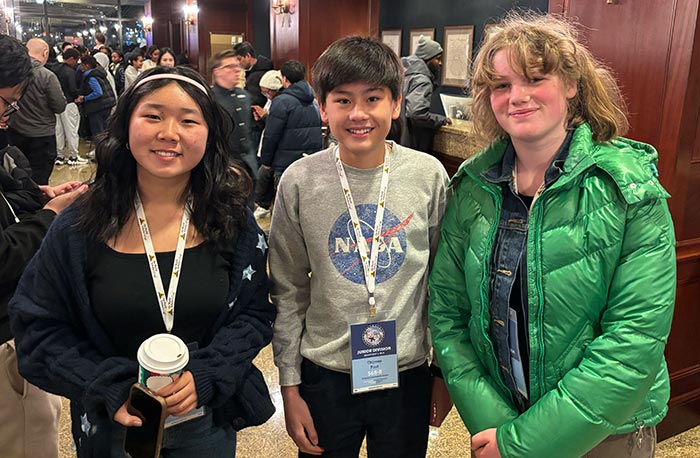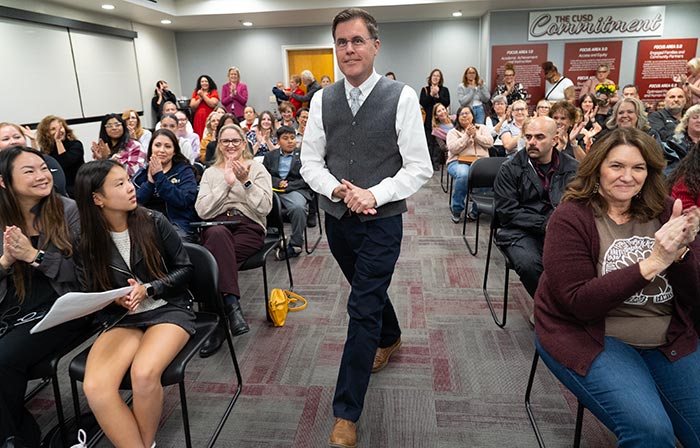Changes in CHS dress code prompt protests, dialogue
A group of local teens is working to raise awareness about rules they say unfairly target girls. Their effort was prompted by concerns about changes in the 2016-2017 dress code at Claremont High School.
The rules circulated only a few days in advance of the new school year when Principal Brett O’Connor emailed CHS families the evening of Thursday, August 25 notifying them the school would revert to the previous year’s dres
Ordinances regarding student attire will be revisited in the coming months, Mr. O’Connor concluded, with the input of as many community stakeholders—administration, staff, students and parents—as possible.
The students applaud Mr. O’Connor’s receptivity. Still, they feel the short-lived new dress code sheds light on negative attitudes towards girls. What’s more, they say it has led them to reassess the old dress code with fresh awareness.
“We are still protesting the old dress code that has been reverted to, because we are not satisfied with some of its clauses,” CHS senior Stephanie Gutierrez told the COURIER in an email. “More importantly, the foundation upon which the dress code is fabricated is what we are petitioning against. The current dress code still is majorly directed towards the female body.
“In having rules against cleavage, shoulders and bare midriffs, the female body is being shamed and depicted in a way that condemns young women for the uncontrollable way their bodies are shaped,” she continued.
The student activists would like to see edicts like the ban on spaghetti straps lifted. “Shoulders shouldn’t be sexualized,” CHS junior Dixie Reese said.
Senior Zach Offhill agrees. “The only thing they should be able to restrict is things that pose a threat to people learning, which is what school is for,” he said. “I don’t think that girls showing their shoulders in class is going to make boys not learn. In reality, it should be our own responsibility.”
The students also hope to address another sticking point: the ban on ‘do-rags and bandanas.
Kikesa Kimbwala says wording accompanying the restriction on the accessories in the now-rescinded dress code associates items “traditionally used to manage [African-American] hair” with criminal activity. The language preceding the ban includes them among “attire or accessories which advocate gangs, drugs, alcohol, violence, terrorism, inappropriate symbols, sexual language/pictures, or of private body parts.”
Even without that language, Kimbesa feels the standing ban on bandanas and ‘do-rags is discriminatory and shows a lack of cultural sensitivity.
Thirteen CHS students, mostly female, convened in front of the Claremont Colleges’ Honnold/Mudd Library on Friday, August 26 to collect signatures. Despite the return to the previous dress code, they wanted to continue the dialogue.
“Let’s take advantage of this opportunity for a broader discussion about the censorship of female and minority students,” senior Hannah Biering tweeted the day before the demonstration.
The students were circulating a petition stating they were “dissatisfied with and concerned about Claremont High School’s dress code policies and are in favor of implementing an equal and reasonable dress code which all members of CHS are comfortable and content to follow.”
“The dress code is overwhelmingly directed at females, and in large part for issues girls can’t control, such as the way their bodies develop,” an accompanying letter read. “It teaches girls their purity and value is defined by how others perceive them visually, as opposed to their actions and how they treat other people. To then tell us our bodies are distracting tells students someone is looking at us with sexual intent, and [the censorship] makes us paranoid and feel insecure of our own bodies.”
The letter also suggested that clothing deemed immodest might, in fact, be practical.
“We would also like to take into account that we live in a hot desert climate,” the students wrote. “To censor clothing such as spaghetti straps for the sake of ‘a disruption to the education process’ is unfair.”
As of press-time, the petition had gathered more than 200 signatures. Mr. O’Connor emphasized that he respects where the students are coming from.
“Some of the female students feel the dress code is sexist,” the administrator told the COURIER. “We need to listen to that group and really have a better understanding of their feelings and go from here.”
He sees the students’ engagement as constructive.
“Our vision statements are really quite clear,” he said. “We say we want students who are empowered and creative thinkers. I want them to feel comfortable questioning. That’s what we need to do in a democracy. Our job in high school is to prepare students for adulthood and to live and engage in a democratic world.”
Inching restrictions
It started August 22 when seniors Michael Dauber and Stephanie Gutierrez went to the high school to register and were informed their shorts were too short. They were given a copy of the new rules, which were quite specific: “shorts must have a minimum of a 3-inch inseam (from the crotch to the bottom of the garment).”
The girls and their friends were bothered by the new rules, which they felt were stringent and aimed at female students. “Are they going to use a ruler?” Dixie asked about the shorts length. There was also a ban on “overly tight pants that reveal undergarments.”
“Nearly every girl I know wears skinny jeans,” Dixie said.
The girls wondered if someone would be looking to see if they had a visible panty line. Certainly, the answer wouldn’t be to go without, because the rules specified “undergarments should never be visible but always worn.” The students say that seems directed at girls and their bras.
Another new edict was the ban on garments that “reveal cleavage.” The previous dress code—which, again, is now in effect—simply prohibited “excessive cleavage.”
“People with certain body types can’t help if clothes are tight on them,” Dixie elaborated. “And there are some girls with larger chests who can’t help it. Excessive cleavage we understand, but cleavage is something you can’t help.”
Kikesa shared her concerns with Principal O’Connor, saying she felt the dress code was unfair to minority students as well as girls.
“I was surprised at how well it went and how receptive he was,” she said.
The students are happier with the previous dress code in place, but still say it isn’t girl-friendly. Of the 10 girls who had gathered at Honnold, seven said they had been “dress coded” in their time at CHS.
The students are looking forward to working on a new dress code, and say they are confident they can reach a reasonable compromise.
“We think that a dress code is in place for your physical and hygienic safety at school,” Dixie said. “We think it should be there, we just think it should be revised in way that doesn’t target one specific group of people.”
—Sarah Torribio
storribio@claremont-courier.com










0 Comments